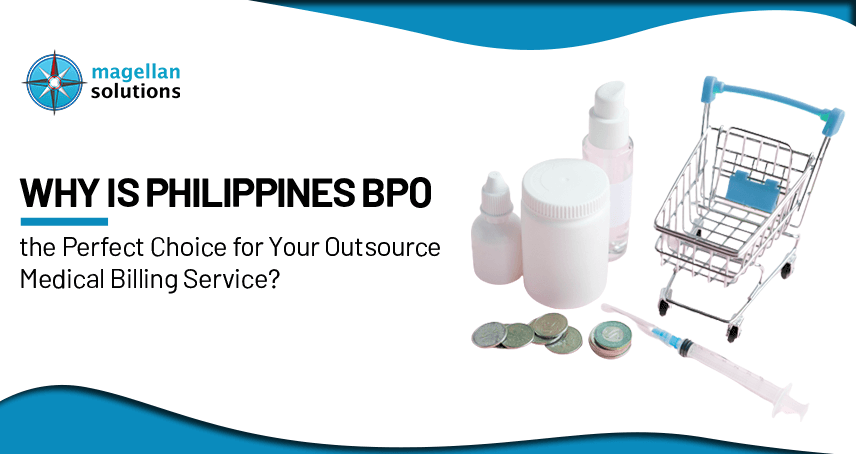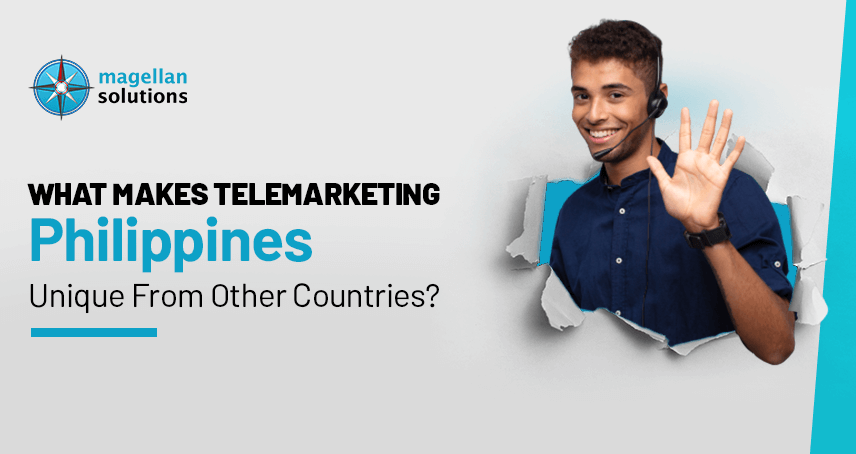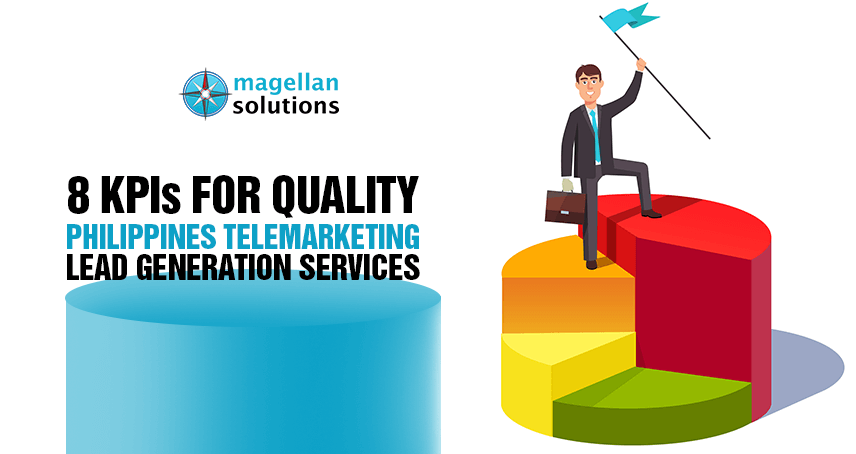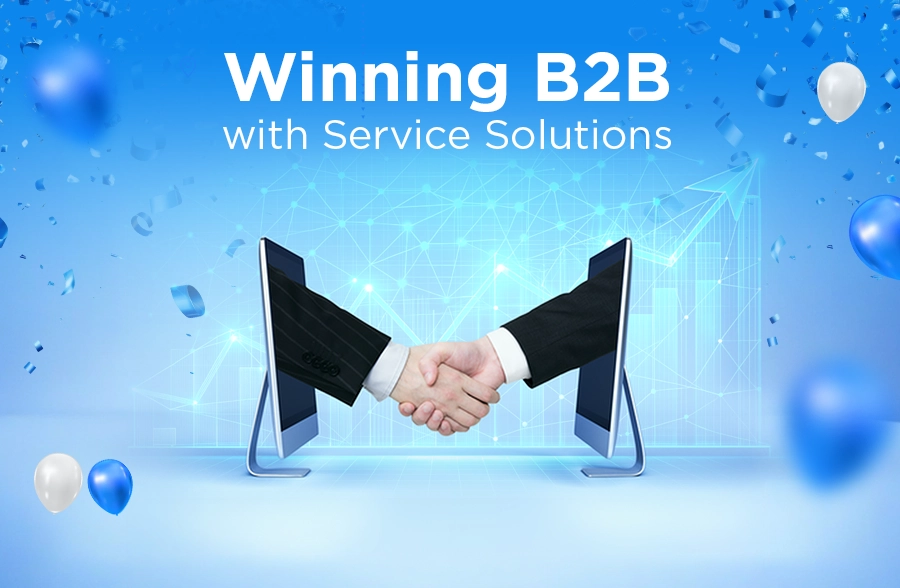Schedule a FREE call with our outsourcing expert now and get a precise quotation that meets your requirements. Don't wait - get started today!
Inbound & Outbound B2C Telemarketing with the largest call center in the Philippines
Magellan Solutions can organically develop and expand your reach to different consumer markets. This is done by directly talking to your customers.
Through high-quality B2C telemarketing services, we can do the following:
- Order entry
- Credit card processing
- Fulfillment
- Customer Survey
Furthermore, our agents establish and build consumer trust. We also identify needs and respond with targeted offers. Interactive voice response (IVR) on inbound telemarketing calls enables your CRM strategy by identifying customers and prospects.
B2C telemarketing is very different from B2B telemarketing and requires a very different approach. From scripting, data sourcing, initial pitch, evaluation of interest, and closing of deals.
If B2C deals with the usual customers, B2B is on a much bigger scale. The customers are no longer those who scroll through their phones and add to their carts. Instead, our in-house call center in the Philippines caters to bosses and business partners.
BPO Manila Philippines on creating partners with B2B telemarketing
B2B Telemarketing is designed to increase brand awareness. It discovers new leads and opportunities via direct conversations with potential customers. Telemarketing has an outbound cold calling in common with Telesales. But each call can have multiple purposes:
- Lead generation, qualification, and segmentation
- Appointment setting for inside sales teams
- Market research and polling
- Customer feedback and retention
- Turning leads into opportunities
With a friendly culture and excellent English skills, BPO workers in the Philippines are natural telemarketers. This makes us famous for being the best hub for offshore call centers across a range of industries.
- Financial services, credit cards, and insurance
- Utilities
- Telecommunications and Internet service providers
- FMCG and wine sales
- Charities and fundraising
- Marketing research and lead generation
Is telesales expensive because of the target customer?
B2B Telesales is much more focused than B2B Telemarketing.
Telesales professionals, at least in principle, receive qualified sales leads from telemarketers and other marketing channels. They then proceed to close them with outbound calls. The most effective telesales people are experienced telemarketers. They can move leads down the sales funnel toward a sale as needed.
Now, are telemarketers for telesales expensive?
Many factors go into telemarketing service prices. Furthermore, they can fluctuate a great deal. While getting quotes from multiple providers is the best way to compare, the following figures provide a general idea:
- Expect to pay anywhere from $10 to $70 per hour, with an average price of around $25 to $50 per hour.
- In-house teams may be charged by the lead. This results in a higher cost of around $35 to $60 per lead.
Once paid, you gain so much more:
Rule compliance
A growing number of rules and regulations govern telemarketing calls. By using contact center services Philippines, you are spared the troubles of legal adherence.
Flexibility and scalability
Magellan Solutions can easily keep up with increased telemarketing demand. Whether it is due to seasonal or permanent growth. In addition, businesses gain flexibility by using outbound telemarketers. Our agents work in multiple shift operations and multiple languages.
Minimal risk
If your in-house outbound call center doesn’t meet expectations, you wasted your money. But by outsourcing to the biggest call center company in the Philippines, you can cancel or choose not to renew an underperforming agreement.
Focus on your core job
Hiring outsourced outbound call centers frees up precious time and resources. You can focus on developing your business’s strengths and its overall goals.
Cold calls with the warmest experience
Cold calling is one of the most effective tools for breaking into an account and getting a hold of a prospect. It provides a personal experience. Moreso, it can be the start of developing a strong business relationship.
When you think of cold calling, you think of a boring phone call. But it is more than just a sales rep trying to push their product or service. Cold calling often gets a bad rap. It is time for a better call center experience in the Philippines.
Here are the dos and don’ts of modern-day cold calling for call center ph:
| Do | Don’t |
| A “no” isn’t a failure.
Cold calling still provides you with valuable insight. It helps refine your approach. Think of cold calling as informal market research. It’s a powerful way to gain market clarity and learn all about your prospects. Let your agents listen to what people say and put that to work. |
Don’t take it personally.
Not everyone is thrilled you’re calling them out of the blue. Rejection is a necessary part of sales activity. Prospects who say “no” aren’t rejecting you personally. Rather they are rejecting the product or service. They do not find it a good fit for them. Don’t be over-sensitive. You are just doing your job. Getting the no’s is only going to lead you toward a yes. |
| Be brief.
The last thing you want is a lengthy, convoluted message. Let your callers to the point. Skip the “how-are-you” lead-ins as it is already an old way. State your purpose, what’s in it for the customer, and your request in as few sentences as possible. The shorter the call, the more you can move on to the next prospect. |
Don’t jump straight to the pitch.
This is your first interaction with this prospect. There is still a need to earn trust and interest. Furthermore, you need to establish credibility with a few opening lines. Start a conversation by opening with a question that addresses a problem or issues the prospect faces. Then add that you know your product or service can fix it. It would be best to gain the prospects’ trust before pushing the product or service on them. |
| Positive & prepared.
Prospects will surely ask. That is why we have prepared scripts with all the details. Excellent listening skills are the main component. Agents have this so that they can adjust the scripts to the needs of the prospect. |
Don’t waste time.
You are calling this person out of the blue. They could be in the middle of something important. Be thoughtful and kind with their time. If they say it’s a bad time, reschedule. When you’re cold calling, you’re essentially intruding on their day. Make sure your call is worth interrupting their time. |
| Be real with yourself.
You’re looking to build a long-term partnership. Avoiding canned and robotic messages is key. Exude authenticity by not fully depending on scripts. |
Don’t hang up without a follow-up.
Ask to schedule another call or a follow-up meeting before ending the call. Let them know you will be emailing them, to sum up the conversation. Inform them that you’ll be sending a calendar invite for what you had agreed upon. It is your job to make sure that there is a next time. |
| Carefully craft messages.
Being “authentic” doesn’t mean shooting from the hip. There is still a need to prepare messages that sound interesting, natural and avoid industry buzzwords, jargon, and clichés. Well-chosen words make prospects more comfortable. |
Don’t forget that the prospect is the focus.
The conversation should be all about the prospect before the company. Our agents effectively tailor the call toward the prospect. They ask questions and uncover pain points. They do not pitch your product or service on your first cold call unless the prospect asks. |
| Leave a voicemail.
Include the following: • Business name & number • Reason for calling • Repeat business name & number |
Don’t try to overcome all concerns & objections.
Don’t try to counter all objections. Dig a little deeper to find out what’s really behind the objection. There will be some prospects that will have doubts or concerns about the product or service. Accept that you may need to let some go if they can’t get past these concerns. |
Once your telemarketer from the biggest call center company in the Philippines understands everything above, then all that’s left is closing the deal.
Key Performance Indicators (KPIs) In Less Than 10 Ways
The marketing strategy goes hand-in-hand with the b2b outbound telemarketing strategies. Not only does the sales team need to know what platform/methods are best for selling. But they also need to know the goals for the products or services.
Having constant communication with the marketing team will help both teams align their strategies to work cohesively.
Is it succeeding? Is it failing? Are there issues with the script, the leads, or the agents? These are questions we need to ask every day.
What better way than to answer these in less than 10 KPIs by BPO companies in Metro Manila:
1. Sales Per Hour (SPH):
Defined as the number of sales made divided by the number of hours.
This is common for telemarketing companies to use to measure success. The number of sales in an hour is a common question that we hear multiple times throughout the day. This is an important KPI. Magellan Solutions strive to get the most sales each hour so we can be successful.
2. Contacts Per Hour (CPH)
This is simply how many contacts the agents can make in each hour (total contacts divided by total hours). This is important because if the agents are not contacting customers, they certainly cannot sell to them.
CPH can be evaluated in many ways.
We check if there are certain hours throughout the day that peak for reaching contacts. We also determine if it’s a particular day. Once done identifying the best time for contacting customers, provides an advantage in setting the team up for generating more sales.
If the CPH is low, we dig into the data and figure out why. We consider if the list is good or if there are potentially a lot of bad numbers.
3. Conversion Rate
A calculation made up of the number of opportunities the agents spoke with that turned into a sale (total contacts divided by total sales). Regardless of how many hours are spent on a campaign, this helps evaluate how the team is doing when they reach a decision-maker. This is important to know on many levels.
If the conversion rate is low, it’s important to evaluate why.
Is the script good or could it use some fine-tuning?
Are the agents using appropriate rebuttals?
Are the agents calling into the right market?
On the flip side, although we all desire the highest conversion rate possible, we have to be conscientious of the quality of sales generated. We must always make good and high-quality sales rather than just quantitative.
4. Average Talk Time (ATT)
The average time that an agent is talking on the phone to the customer. This is important to telemarketing companies. It helps identify areas of opportunity. If the ATT is high, the script may weigh the calls down. There could also be an opportunity to do some coaching with the agent.
Perhaps a reminder is needed to make sure the agents are being as clear as possible with the customer. If it’s the script bogging down the calls, it’s time to re-evaluate the script and adjust as needed.
5. Average Wrap Time (AWT)
This is the average time it takes an agent to wrap up a call. Some sales campaigns don’t have much wrap time because most of the information is done while talking with the customer. At times there is extra information that needs to be recorded from the call before it’s completely done.
This metric is important to evaluate as it’s good to understand how long it takes for agents to wrap up a call.
Are there some agents that are not efficient after the call to get to the next one? Is the task of wrapping the call or record cumbersome and needs to be re-assessed? Is there a way to streamline the wrap-up to improve the AWT?
The more time the agents are talking on the phones, the better chance of improving the SPH.
6. Dials Per Hour (DPH)
Total dials divided by the number of total hours is the definition of this metric. We must make sure the agent is dialing as efficiently as possible. If the agents aren’t dialing as efficiently, this can affect other metrics. The fewer contacts made, the fewer sales made per hour.
7. Finalized Per Hour (FPH)
Calculated by the number of finalized leads divided by the total number of hours. The reason that it is important to watch this is so we know if we have enough leads to support the dialing strategy in place or if we’ll need to supplement with additional leads.
If we are finalizing more records in an hour than we originally anticipated, it is important to see if there’s a potential issue. Something to consider if there are bad numbers that we’re cycling through. It’s good to evaluate all possibilities.
8. Return on Investment (ROI)
This is a crucial KPI for clients. The basic way ROI is defined is the total sales revenue generated by the campaign divided by the actual cost of the campaign. This is a way that clients can ensure the investment that they made is worth it.
Being able to get sales is great. But if it costs more than the sale itself is worth, it may not be prudent for the client. To get the best ROI for our clients, we need to consider all the metrics above. It’s important to be efficient in our dialing and in working with every lead while representing our clients with excellence.
Take time to choose the right KPIs for your needs, and then ensure you’ve got everything set up to measure them properly. The contact center industry in the Philippines can do wonders in helping you measure KPIs.
Fill up our form and you just might meet your next partner!
















